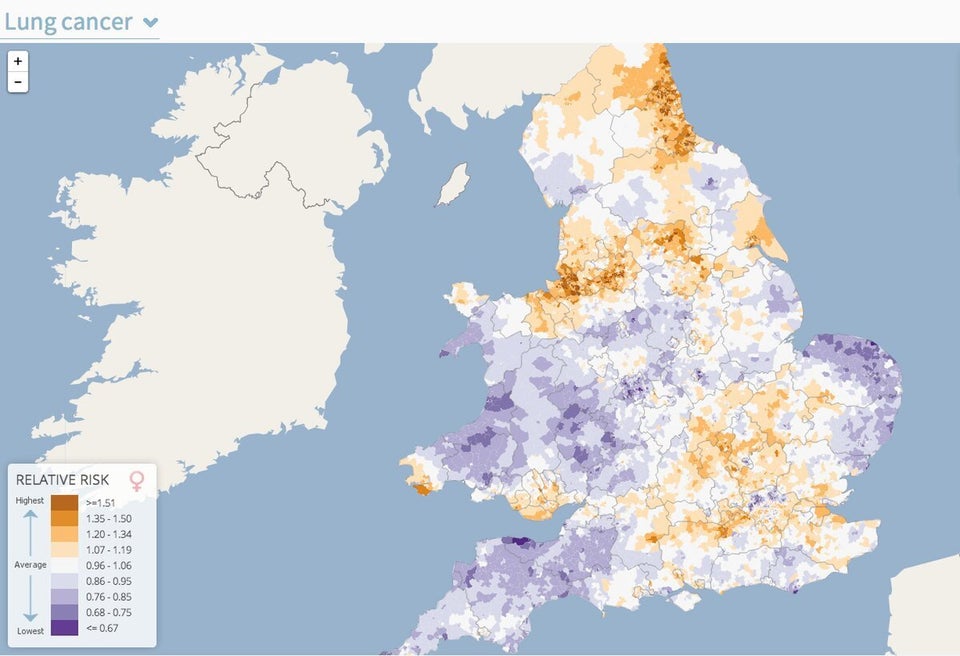A series of maps pinpointing where health conditions including lung cancer and stillbirths are the highest and lowest in England and Wales have been developed.
The interactive health atlas shows in detail whether or not a small area has lower or higher risk of a number of illnesses when compared to the average.
Geographical patterns for 14 diseases and conditions including breast cancer, lung cancer, heart disease and low birth rates have been mapped out by the Small Area Health Statistics Unit (Sahsu), which is based at Imperial College London.

The atlas also shows regional maps of a number of environmental hazards including air pollution, levels of sunshine and pesticides.
By inputting a postcode into the online version of the atlas, users can zoom into a neighbourhood and examine health and environmental maps for their local area.
While the maps do not show the risks for individuals living in a specific area, they provide an indication of the health risk for the area compared to the national average.
The creators cautioned that people shouldn't make simple associations between the environment and health maps - which have been adjusted to account for age and areas of deprivation. But they did say that areas of possible research could be identified through the maps.
They did find that 33 areas showed "consistent patterns of lower relative health risks", including central London, north Norfolk parts of Suffolk and Brighton and Hove.
Meanwhile eight areas showed more patterns of higher risk which were in the north west of England, parts of Yorkshire and south Wales.
Dr Anna Hansell, from Sahsu, lead author of the atlas, said: "The atlas is a fantastic tool for researchers, policy makers and the public.
"It is the first publication in the UK to amalgamate data at this level of resolution on health and environment.
"It connects people to health and environment at a neighbourhood level and provides resources to learn about these issues. It also allows us to identify the important questions that need answering about patterns of health and environment risk for future avenues of research."
